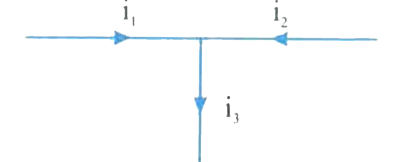x1=3sinωt⇒x2=4cosωt. Find (i) amplitude of resultant SHm, (ii) equation of the resultant SHm.
Video Solution
Text Solution
First , write all SHMs in term of sine function with positive amplitude. Keep ωt with positive sign.
x1=3sinωt,x2=4sin(ωt+π/2)
A=√32+42+2×3×4cosπ2=√9+16=√25=5 =√9+16=√25=5
tanϕ=4sin(π)23+4cos(π)2=43.ϕ=53∘
Resultant equation, x=5sin(megat+53∘)
|
Updated on:21/07/2023
Topper's Solved these Questions
- BOOK - CENGAGE PHYSICSCHAPTER - LINEAR AND ANGULAR SIMPLE HARMONIC MOTIONEXERCISE - Solved Example15videos
LINEAR AND ANGULAR SIMPLE HARMONIC MOTION
- BOOK - CENGAGE PHYSICSCHAPTER - LINEAR AND ANGULAR SIMPLE HARMONIC MOTIONEXERCISE - Exercise 4.123videos
LINEAR AND ANGULAR SIMPLE HARMONIC MOTION
- BOOK - CENGAGE PHYSICSCHAPTER - KINETIC THEORY OF GASES AND FIRST LAW OF THERMODYNAMICSEXERCISE - Interger11videos
KINETIC THEORY OF GASES AND FIRST LAW OF THERMODYNAMICS
- BOOK - CENGAGE PHYSICSCHAPTER - MISCELLANEOUS KINEMATICSEXERCISE - Interger type3videos
MISCELLANEOUS KINEMATICS
Similar Questions
Knowledge Check
- Question 1 - Select One
If i1=3sinωtand(i2)=4cosωt, then (i3) is
 A5sin(ωt+53∘)B5sin(ωt+37∘)C5sin(ωt+45∘)D5sin(ωt+35∘)
A5sin(ωt+53∘)B5sin(ωt+37∘)C5sin(ωt+45∘)D5sin(ωt+35∘) - Question 2 - Select One
The displacements of two intering lightwaves are y1=4sinωt and y2=3cos(ωt). The amplitude of the resultant wave is (y1 and y2 are in CGS system)
A5 cmB7 cmC1 cmDzero - Question 3 - Select One
If two waves represented by y1=4sinωt and y2=3sin(ωt+π3)interfere at a point, the amplitude of the resulting wave will be about
A7B6C5D3.5
x1=5sin(ωt+30∘)
x2=10cos(ωt)
Find amplitude of resultant SHM.View Solutionx1=5sin(ωt+30∘), x2 = 10 cos (ωt) Find amplitude of resultant SHM.
View Solutionx1=3sinωt
x2=5sin(ωt+53∘)
x3=−10cosωt
Find amplitude of resultant SHM.View SolutionIf i1=3sinωt and i2=6cosωt, then i3 is
 View Solution
View SolutionThe r.m.s. value of I=I1sinωt+I2cosωt is
View Solution

